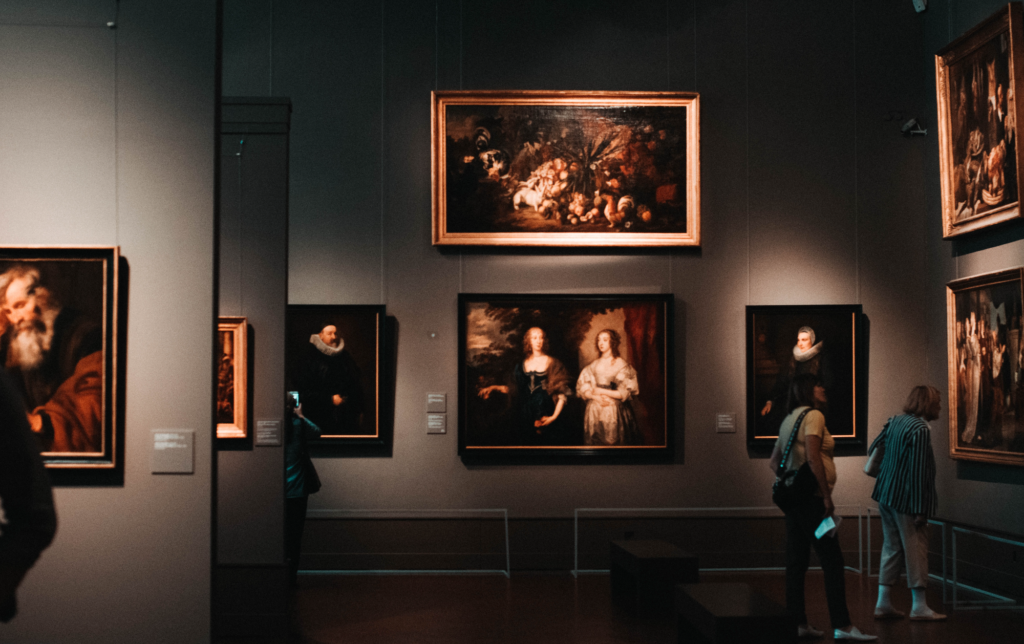By: Natasha Patel, Staff Writer

In March 2021, a digital work of art sold for $69.3 million at Christie’s.[1] Digital art is being sold currently for millions of dollars, including abstract renditions of pixels, crude sketches, and even pet rocks. But these pieces of art are not pieces by Van Gogh or Banksy, these are NFTs. NFTs have been become a growing topic, primarily for those tuned into the cryptocurrency sphere. However, to most people, NFTs are still quite foreign. As our digital landscape is forever changing, it will be important to know about this digital asset that is taking off.
What are NFTs?
NFTs are non-fungible tokens, which are commodities that are not interchangeable or easily replaceable.[2] NFTs have grown in the recent years, primarily for their emergence in digital art. They have become a new medium and platform for the buying and selling of artwork.[3] NFTs are supported through blockchain technology, a secure way of recording digital transactions.[4] Blockchain is commonly used for tracking cryptocurrency transactions, such as those that occur via Bitcoin and Ethereum.[5] The biggest difference between cryptocurrency and NFTS is that Bitcoin and others alike are fungible, where NFTs are non-fungible, which has led to their increased demand and value.[6]
Owning NFTs has been compared to owning an autographed photograph of a celebrity.[7] Like the photograph, owning an NFT may not come with all the metaphorical “sticks in the bundle” that are dictated by property law, such the right to transfer, use, destroy or exclude. For example, owning the autographed photograph does not automatically give the owner the right to copy, print or distribute the photograph, that right is still left to the original creator.[8]
NFTs have captured the interest of even the NBA and NFL, creating an entire marketplace for investors to purchase coveted highlight clips of star players.[9] With this growing digital asset and market comes a need to understand what laws govern and protect interests of those involved in these trades and what areas of the law may grow because of NFTs.
Intellectual Property and NFTs
One of the concerns with NFTs is the protection of property rights of these creators and their works.[10] Currently, the rights associated with NFTs fall under the umbrella of intellectual property law.[11] Like artwork, such as paintings, owners of NFTs have the right to purchase and obtain the NFT, but not always the right to reproduce the works.[12] There are obvious concerns over fraudulent NFT sales and transfers.[13] However, because NFTs are backed by blockchain technology, each NFT is uniquely watermarked with a sequence of code that is traceable on a blockchain ledger.[14] This can be used to verify authenticity of the NFTs themselves.[15] In an effort to crack down on counterfeit works, NFTs may be paving the way for a secured form of art auctioning and collecting.[16]
The rights available with NFTs depend on the rights that are transferred during the sale and will vary from each NFT.[17] The rights that transfer is explicitly determined by the creator of the NFT and whether they license rights to the buyer to reproduce, distribute, and so forth.[18] Under 17 USC § 106, the owner of a copyright has exclusive rights to reproduce, prepare derivative works, distribute, perform and display the works.[19] This means that the creator holds all the metaphorical “sticks in the bundle” and can determine which rights to license out and which rights to exercise exclusive control over.[20]
Overall, this is still a growing area that will continue to expand intellectual property law and the legal landscape as we know it.
[1] https://www.abajournal.com/magazine/article/nonfungible-tokens-are-all-the-rage-now-what-are-they-and-what-should-buyers-watch-for
[2] https://www.businessinsider.com/fungible-meaning
[3] https://www.forbes.com/advisor/investing/nft-non-fungible-token/
[4] https://www.nhbr.com/nfts-and-intellectual-property/
[5] Id.
[6] https://plus.lexis.com/search?crid=5c386f6b-473e-40b6-b0f3-d01ed798a5db&pdsearchterms=LNSDUID-ALM-AMLAWR-20210503THEWORLDOFNFTSANDTHEIRIMPLICATIONSININTELLECTUALPROPERTYLAW&pdbypasscitatordocs=False&pdsourcegroupingtype=&pdmfid=1530671&pdisurlapi=true&cbc=0
[7] https://www.jdsupra.com/legalnews/what-you-need-to-know-intellectual-2201399/
[8] Id.
[9] https://www.nhbr.com/nfts-and-intellectual-property/
[10] https://www.jdsupra.com/legalnews/what-you-need-to-know-intellectual-2201399/
[11] Id.
[12] Id.
[13] https://plus.lexis.com/search?crid=5c386f6b-473e-40b6-b0f3-d01ed798a5db&pdsearchterms=LNSDUID-ALM-AMLAWR-20210503THEWORLDOFNFTSANDTHEIRIMPLICATIONSININTELLECTUALPROPERTYLAW&pdbypasscitatordocs=False&pdsourcegroupingtype=&pdmfid=1530671&pdisurlapi=true&cbc=0
[14] https://www.jdsupra.com/legalnews/what-you-need-to-know-intellectual-2201399/
[15] Id.
[16] https://www.jdsupra.com/legalnews/what-you-need-to-know-intellectual-2201399/
[17] Id.
[18] https://www.jdsupra.com/legalnews/what-you-need-to-know-intellectual-2201399/
[19] https://www.law.cornell.edu/uscode/text/17/106
[20] https://www.abajournal.com/magazine/article/nonfungible-tokens-are-all-the-rage-now-what-are-they-and-what-should-buyers-watch-for